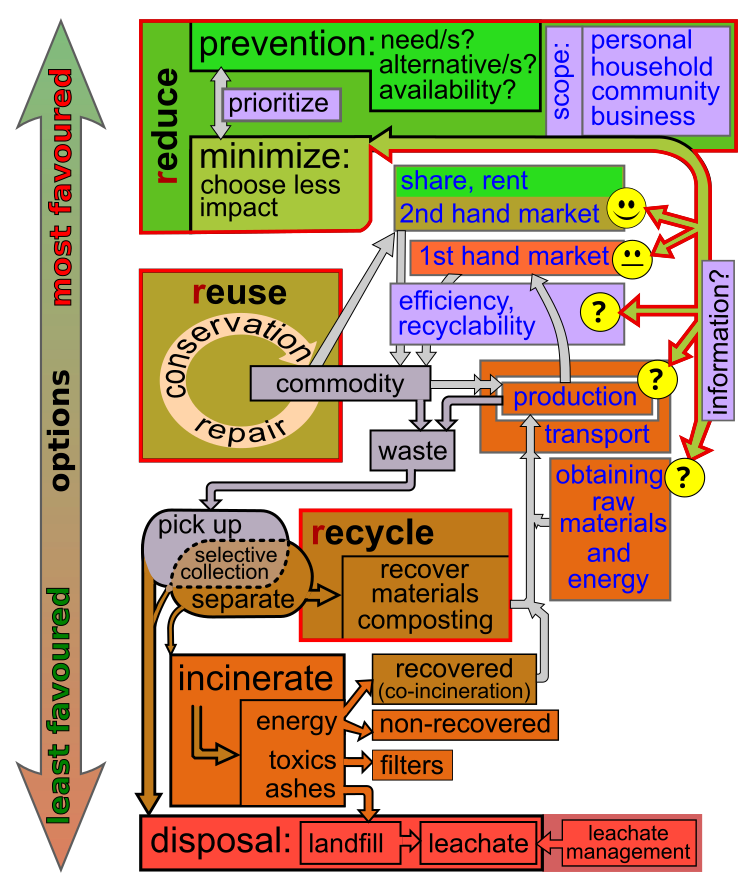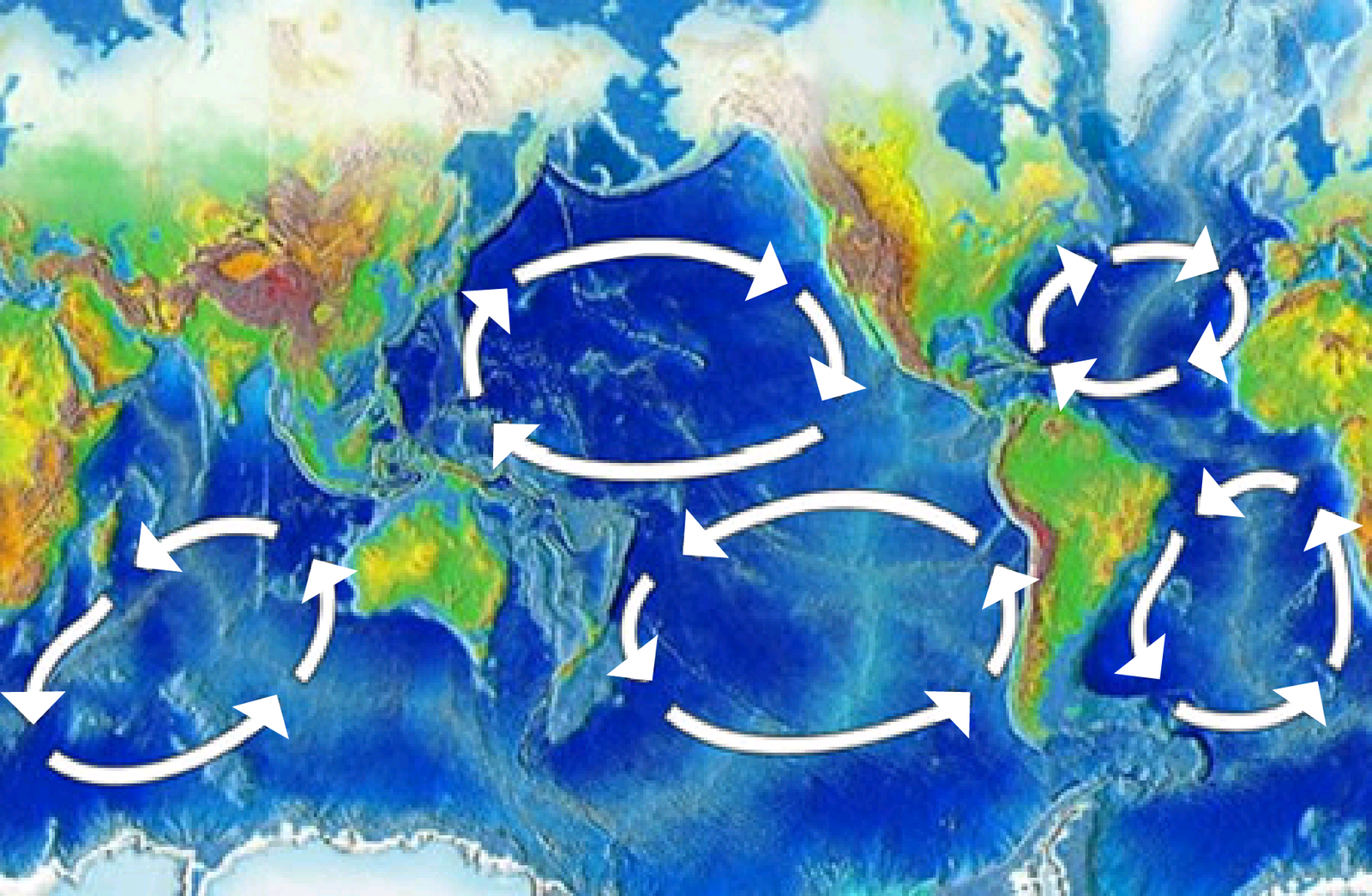IB Syllabus focus:
‘Most sustainable: reduce consumption and control releases. Restoration cleans damaged systems (e.g., ocean gyres) but is costlier and less effective than prevention.’
Preventing environmental damage is more effective and economical than restoring ecosystems. Sustainable resource management prioritises reducing consumption and pollution before irreversible harm occurs.
Prevention as the Priority in Sustainability
The IB Environmental Systems and Societies syllabus emphasises prevention over restoration. Preventive strategies aim to minimise environmental degradation before it occurs, lowering the costs and risks associated with long-term damage.
Key aspects of prevention
Reducing consumption of resources to slow depletion.
Controlling pollutant releases into the atmosphere, soil, and water.
Designing processes and products with minimal waste and emissions.
Encouraging behavioural change through education and awareness.
Most sustainable: reduce consumption and control releases.

The waste hierarchy ranks management options from most to least sustainable, placing prevention/source reduction and reuse above recycling, recovery, and disposal. It succinctly illustrates why avoiding waste and controlling releases at source are superior to end-of-pipe actions. Source.
Why Prevention is More Sustainable
Sustainability requires balancing human needs with ecological integrity. Preventing damage maintains the natural functions of ecosystems, which are often irreplaceable once lost.
Prevention preserves ecosystem services such as water purification, nutrient cycling, and climate regulation.
Prevention avoids long-term economic costs of clean-up operations.
It reduces the loss of biodiversity, which is vital for resilience.
It ensures resources remain available for future generations.
Restoration: Role and Limitations
Although restoration is sometimes necessary, it is considered a secondary strategy. Restoration attempts to repair damage already done to ecosystems.
Examples of restoration
Reforestation after deforestation.
Soil remediation to remove heavy metals.
Clean-up projects for oil spills.
Ocean gyre clean-ups targeting plastic accumulation.
Despite these efforts, restoration faces several limitations:
High financial costs compared to prevention.
Technological challenges in fully replicating complex ecosystems.
Incomplete recovery, as original biodiversity is rarely restored.
Time delays, with ecosystems requiring decades or centuries to recover.
Restoration cleans damaged systems (e.g., ocean gyres) but is costlier and less effective than prevention.

Map showing the five major subtropical oceanic gyres and dominant surface currents that concentrate floating debris. The large spatial scale and circulation patterns explain why clean-ups are challenging and why source prevention is prioritised. (This map also names specific boundary currents, which is contextual detail beyond the syllabus.) Source.
Definition: Sustainable Development
Sustainable Development: Meeting the needs of the present without compromising the ability of future generations to meet their own needs.
Preventive approaches align strongly with sustainable development, as they conserve resources and reduce pollution at the source.
Preventive Approaches in Practice
Pollution Prevention
Limiting pollutant emissions reduces the likelihood of requiring expensive restoration later. Strategies include:
Switching to renewable energy to cut fossil fuel emissions.
Implementing filters and scrubbers in industry.
Promoting low-emission transport systems.
Resource Efficiency
Efficient use of resources delays exhaustion and reduces environmental harm:
Encouraging circular economy principles (reuse, recycling, redesign).
Energy-efficient technologies in buildings and transport.
Sustainable agriculture practices that reduce chemical inputs.
Policy and Education
Governments and organisations play a role in fostering prevention:
Legislation setting limits on pollution and extraction.
Environmental education promoting awareness of impacts.
Economic incentives like subsidies for renewable energy.
Definition: Pollution
Pollution: The addition of a substance or agent to the environment by human activity at a rate greater than that at which it can be rendered harmless.
This definition underlines why prevention is vital — once pollutants accumulate beyond natural absorption rates, restoration becomes both harder and costlier.
Comparative View: Prevention vs Restoration
Prevention
Maintains ecosystem health.
Lower cost in long-term management.
Supports sustainable development goals.
Encourages societal behavioural changes.
Restoration
Provides a last-resort option after significant damage.
Requires advanced technology and expertise.
Cannot guarantee full ecosystem recovery.
High investment of time, money, and resources.
Linking Prevention to Global Issues
Global challenges such as climate change, deforestation, and plastic pollution illustrate the value of prevention:
Mitigating carbon emissions is cheaper than adapting to climate-induced disasters.
Protecting forests prevents biodiversity loss and carbon release.
Reducing single-use plastics avoids costly ocean restoration projects.
Long-Term Implications
Prioritising prevention ensures:
Resource security for future generations.
Reduced environmental injustice, as marginalised groups often bear restoration burdens.
Greater stability in ecosystems, allowing continued provision of natural income from natural capital.
By embedding prevention into societal, political, and economic systems, societies can move towards genuine sustainability, avoiding the pitfalls of relying solely on restoration.
FAQ
Prevention strategies reduce damage before it occurs, saving governments and organisations from paying for expensive clean-up and repair programmes. For example, controlling emissions is significantly cheaper than attempting to restore polluted rivers or remove plastics from ocean gyres.
Restoration often requires advanced technology, skilled labour, and long-term funding, while prevention usually relies on upfront regulation, education, and modest infrastructure improvements.
The precautionary principle states that action should be taken to avoid harm even when scientific certainty is lacking. Prevention embodies this idea by reducing risks before irreversible impacts occur.
For instance, limiting pesticide use without waiting for complete scientific consensus protects biodiversity and soil health while still allowing agricultural production.
Cultural values strongly shape environmental decision-making. Societies that emphasise consumption may resist preventive measures, preferring visible restoration projects as symbols of action.
Conversely, cultures prioritising harmony with nature often integrate waste reduction, conservation, and restraint into daily life, making prevention strategies more effective and socially accepted.
Prevention avoids placing restoration burdens on communities that are often least responsible for environmental harm.
Low-income groups may lack resources to manage polluted water or degraded land.
Preventing harm ensures these communities are not disproportionately affected by damage created elsewhere.
This fosters fairness by addressing root causes rather than shifting clean-up costs.
Technology enables more efficient prevention by reducing resource use and emissions at the source. Examples include:
Renewable energy reducing fossil fuel dependence.
Smart sensors monitoring air and water quality to detect pollution early.
Sustainable product design that minimises waste through recyclability and longer lifespans.
Such tools make prevention more practical and measurable, decreasing reliance on costly restoration later.
Practice Questions
Question 1 (2 marks)
State two reasons why prevention of environmental damage is more sustainable than restoration.
Mark scheme:
1 mark for each valid reason, up to 2 marks.
Possible answers:
Prevention maintains ecosystem services.
Prevention avoids higher economic costs of restoration.
Prevention reduces biodiversity loss.
Prevention ensures resources are conserved for future generations.
Question 2 (5 marks)
Discuss the limitations of restoration compared to prevention in managing environmental sustainability.
Mark scheme:
Up to 5 marks awarded for a balanced discussion.
1 mark: Identifying restoration as a secondary strategy that attempts to repair already damaged ecosystems.
1 mark: Mentioning the high financial costs of restoration compared to prevention.
1 mark: Highlighting technological challenges and the difficulty of replicating complex ecosystems.
1 mark: Explaining that restoration rarely achieves complete recovery of original biodiversity.
1 mark: Noting the time delays, as ecosystems may take decades or centuries to recover.
Answers must clearly compare restoration with prevention to gain full marks. A purely descriptive answer on restoration without reference to prevention is capped at 3 marks.

